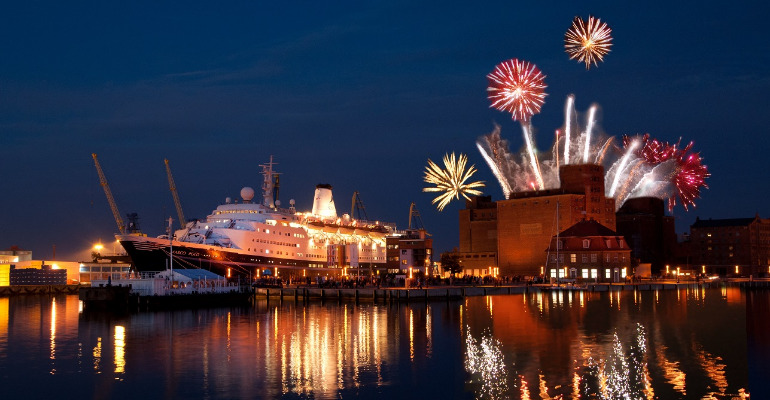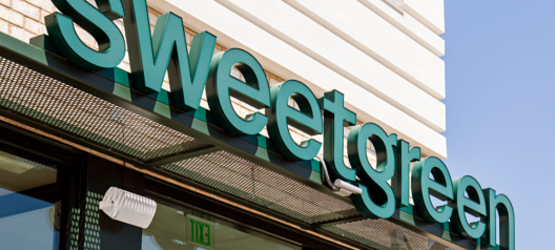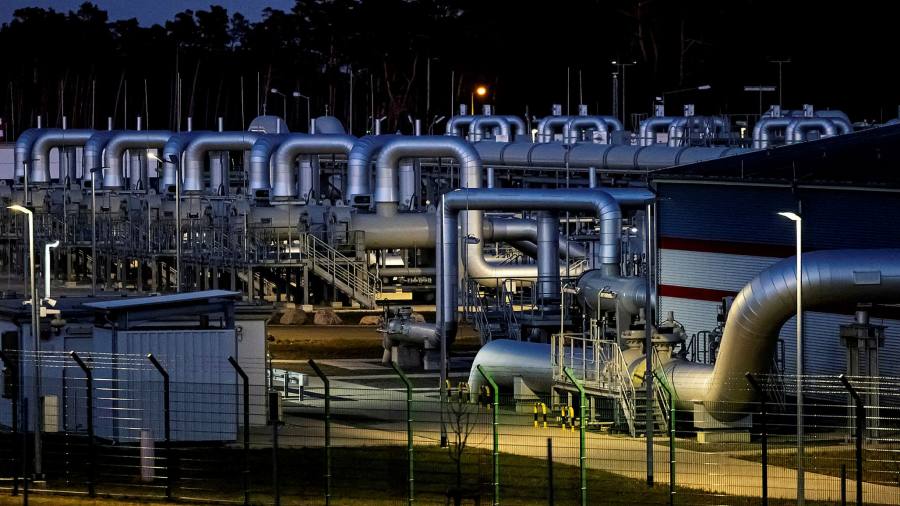TKMS will seek to convert the Wismar site into a shipyard specializing in building submarines and possibly even naval surface vessels.
MV Werften Managing Director Christoph Morgen confirmed the news on June 10, which met with general confidence in the long-term security of Wismar as a shipbuilding location.
end of an era
With the investment by TKMS, decades of building passenger ships in Wismar – an important part of the maritime heritage – come to an end.
The shipyard began building passenger ships shortly after World War II under the socialist economic system of the German Democratic Republic (GDR). In October 1951, the shipyard that emerged from several local small shipbuilding companies was officially launched as VEB Mathias-Thesen-Werft Wismar. It soon gained importance for the construction of passenger ships and supplied large numbers of river boats to the Soviet Union.
Ocean-going passenger ships followed in the late 1950s, and in October 1964 the yard rose to fame with the delivery of the Ivan Franko – one of a series of prestigious ocean-going cruise ships known in Germany as the “Project 301” or “SeeFa 750”.
The series included five ships – Ivan Franko, Aleksandr Pushkin, Taras Shevchenko, Shota Rustaveli and Mikhail Lermontov – which were delivered to the Soviet state-owned companies Baltic State Shipping Company and Black Sea Shipping Company between 1964 and 1972. Designed with elegant lines and offering superior comfort for the time, the ships attracted attention in Eastern Europe and beyond. In addition to the good reputation of the ships, the number of ships for this period was groundbreaking; The construction of five sister ships in a row was unusual in global passenger shipping in the 1960s and was the largest series of merchant ships for the GDR to date.
Marco Polo
While no Project 301 ships are in service today, the 1965-built Aleksandr Pushkin sailed for 55 years, most recently as Cruise & Maritime Voyages’ Marco Polo, before being scrapped in India last year after the pandemic triggered the cruise line’s collapse. Known for its quality, the ship is expected to serve 60 years.
Marco Polo returned to his birthplace for transit calls in his final years and was one of the ships that helped shape Wismar’s reputation as an upscale cruise port following the establishment of Columbus Cruise Center Wismar in 2012. In October 2014 Marco Polo was celebrated with fireworks and a year later a book was published, Marco Polo – Celebrating Fifty Golden Years of Ocean Travel.
The “golden era” of building ocean and river cruise ships came to an end in Wismar in the 1970s, when the Mathias-Thesen shipyard specialized in other ship types, including rail freight ferries, in the 1980s. Between 1954 and 1990, the shipyard delivered 75,000 folding boats – from kayaks to rowing boats, sailing boats and allegedly even motor boats – prompted by advice from the socialist economy of the GDR for industrial companies to also produce consumer goods in addition to core production. Some of the folding boats from VEB Mathias-Thesen-Werft Wismar were exported and many are still in use today.
With the fall of the GDR, the restructured shipyard temporarily returned to its roots and continued to build on its record in cruise ship construction. Renamed Aker MTW Werft, she delivered AIDA Cruises’ AIDAvita and AIDAaura in 2002 and 2003 respectively, and the hull of Norwegian Cruise Line’s Norwegian Sun was built in Wismar for subsequent fitting out at Lloyd Werft Bremerhaven.
Shipyard employees and Wismar citizens were hoping for a revival in passenger ship building when Genting Hong Kong acquired the site in 2016 – a move that instead heralded the end of Wismar’s long tradition of building cruise ships.
global dream
The fate of the unfinished Global Dream, currently docked at the MV Werften site in Wismar, is unclear. Although unlikely, it can still be completed in Wismar provided there is a buyer soon. A more likely scenario is that the ship will be prepared on site for towing and then transferred to another shipyard for completion.
Another option to scrap the ship is still on the table if no buyer is found.
According to the current status, the ship must be removed from the shipyard by 2023 at the latest in order to prepare the shipyard for naval shipbuilding.
TKMS production from 2024
TKMS will aim to start building submarines in Wismar in 2024, assuming it gets more orders, which is expected.
TKMS will initially convert the shipyard into a production facility tailored to naval shipbuilding and hire personnel. According to current planning, around 800 employees will be needed in advance of production; in the end it could be 1,500 if TKMS also succeeds in acquiring orders for the construction of naval surface ships in Wismar. Recruitment will primarily come from the pool of former MV Werften employees currently employed in the transitional company established following MV’s insolvency earlier this year. Former trainees at MV shipyards are also hired.
The transition company for the former employees of MV Werften was supposed to close at the end of July, but the Mecklenburg-Western Pomeranian government is currently working on extending its term until at least the end of October. While some former MV Werften employees have found new employment, around 1,500 former employees would benefit from the move.
TKMS has already reached agreements with IG Metall Küste, Germany’s largest metalworkers’ union.




